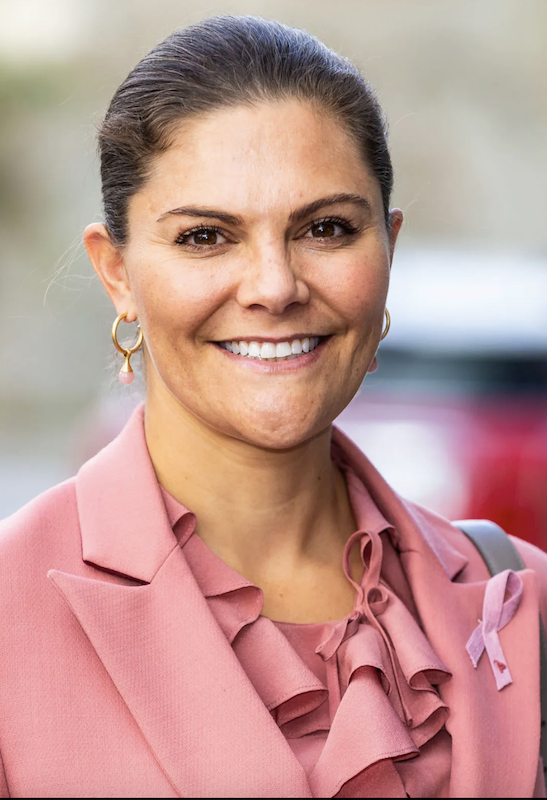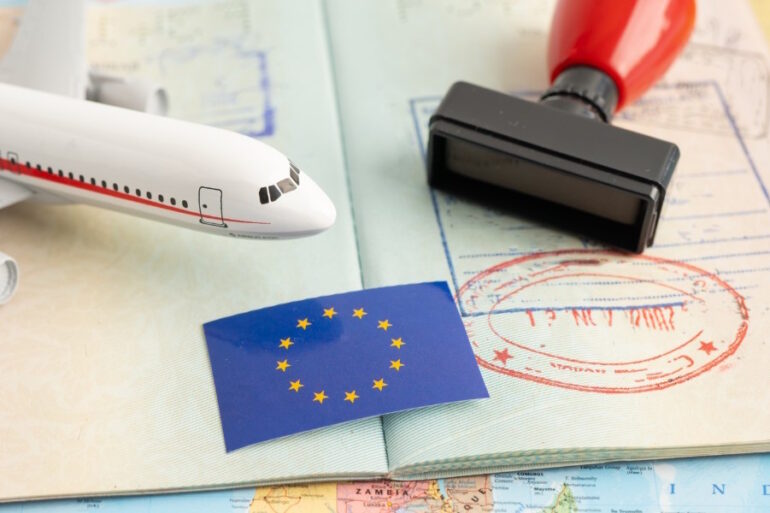A young generation of princesses born in the 21st century will be acceding to thrones across Europe in the coming years.
Europe is no stranger to female monarchs. Over the centuries, from the female royals in 16th century Europe to the remarkable seven-decade reign of Queen Elizabeth II, the continent has had no shortage of queens regnant.
Sure, the next generations of British monarchs will be male with the reigns of King Charles III, Prince William, and Prince George. Moreover, the abdication of Denmark’s Queen Margrethe II last Dec. 31 leaves Europe without a female monarch—but not for long.
Studying in elite schools at home or abroad has exposed them to current global affairs and issues, such as feminist and LGBT causes, climate change, the rise of misinformation, among other pressing concerns.
A young generation of princesses born in the 21st century will be ascending to thrones across Europe in the coming years: Belgium’s Princess Elisabeth, born in 2001; Catharina-Amalia of the Netherlands (2003); Ingrid Alexandra of Norway (2004); Leonor of Spain (2005); and Estelle of Sweden (2012)—about half of the hereditary monarchies on the continent.
Princess Elisabeth of Belgium



Princess Elisabeth, Duchess of Brabant, became heir apparent to the Belgian throne in 2013 following the abdication of her grandfather, King Albert II. She is the eldest child of King Philippe and Queen Mathilde.
If she accedes to the throne as expected, she will become Belgium’s first queen regnant. A new act of succession which introduced absolute primogeniture in Belgium was put into effect 10 years before her birth in 1991. If not for this, her brother, Prince Gabriel, would’ve been the first in line. Absolute primogeniture is a form of primogeniture in which sex is irrelevant for inheritance; the oldest surviving child without regard to sex inherits the throne.
Princess Elisabeth was a student of UWC Atlantic College in the Vale of Glamorgan in Wales, a prestigious school which is a favorite among royals and is dubbed as “hippy Hogwarts.” In 2020, following in her father’s footsteps on the road to the throne, Princess Elisabeth trained at the Royal Military Academy in Brussels and continued tradition by taking the officer’s oath.
The 22-year-old royal is now in her final year taking up a three-year course in history and politics at Lincoln College at Oxford.
Princess Catharina-Amalia of the Netherlands



The reigning monarchs of the Netherlands, King Willem-Alexander and Queen Maxima, have three daughters, the eldest being Catharina-Amalia Beatrix Carmen Victoria, Princess of Orange, Princess of the Netherlands, Princess of Orange-Nassau. She became the heir apparent following the 2013 abdication of her grandmother Queen Beatrix, with her father ascending to the throne.
Compared with its European neighbors, the monarchy in The Netherlands has been predominantly female-led, with three queens reigning in succession from 1890 to 2013.
In 2021, the princess made headlines when she wrote to the Dutch Prime Minister Mark Rutte asking him to waive her right to €1.6 million (US$ 1.74 million) a year in income and personal and household expenses because accepting it would make her feel “uncomfortable.”
In the handwritten letter, she wrote: “On 7 December 2021 I will be 18 and, according to the law, receive an allowance. I find that uncomfortable as long as I do not do anything for it in return, and while other students have a much tougher time of it, particularly in this period of coronavirus.”
The 20-year-old princess is currently in her second year at the University of Amsterdam where she is studying Politics, Psychological Law, and Economics.
Princess Ingrid Alexandra of Norway



Princess Ingrid Alexandra is set to take the throne following the reign of her father, Crown Prince Haakon, who is the only son of King Harald V and Queen Sonja.
Like Sweden a decade prior, the Constitution of Norway was altered in 1990 to introduce absolute primogeniture, ensuring the crown would pass to the eldest child regardless of sex but keeping the Crown Prince ahead of his elder sister, Princess Märtha Louise. The change was to apply for the first time to their children, thus, Princess Ingrid Alexandra has been second in the line of succession since birth, preceded only by her father. Because of the reform, her status was not affected by the subsequent birth of her brother, Prince Sverre Magnus, in 2005.
The princess is expected to become Norway’s first female monarch since Queen Margaret, who reigned over Norway, Denmark, and Sweden from the late 1380s until her death in 1412. As queen, she will be Norway’s highest-ranking military officer, holding the ranks of General in the Norwegian Army and Norwegian Air Force and Admiral of the Norwegian Navy. She will also be the head of the Norwegian Armed Forces.
In 2021, when she was only 17, she co-piloted a fighter jet during her visit to the Norwegian Air Force. A year later, in celebration of her 18th birthday, she visited the Norwegian Army and Navy where she test-drove an armored car and piloted the Stridsbåt 90, a fast military assault craft.
In 2021, it was reported that Princess Ingrid worked as a dishwasher for a summer job in an Italian restaurant.
Princess Leonor of Spain



Arguably the most popular queen-in-waiting on this list, and my personal favorite, is Leonor, Princess of Asturias, the elder child of Spain’s King Felipe VI and Queen Letizia.
The princess had a closely guarded childhood, but things took a turn ahead of her 18th birthday on Oct. 31, 2023. Since then, she has been seen more frequently in public attending official engagements, one of the biggest so far was presenting her inaugural Princess of Asturias Awards to luminaries such as Hollywood icon Meryl Streep and Japanese author Haruki Murakami.
After attending primary school in Barcelona, she enrolled in the International Baccalaureate program of the prestigious UWC Atlantic College in the Vale of Glamorgan in Wales, alongside Princess Elisabet of Belgium, where she graduated last May. Her younger sister, the Infanta Sofia, is currently enrolled in the same school.
As heir presumptive to the Spanish throne and anticipated future commander-in-chief of its armed forces, Princess Leonor began three years of military training in August of last year.
The Spanish royalty is still reeling from the fiscal scandals of Princess Leonor’s grandfather, the former King Juan Carlos, as well as other members of the family. Royal observers are hoping that the fresh-faced Leonor could help rehabilitate the Spanish monarchy’s tainted image.
Crown Princess Victoria and Princess Estelle of Sweden



The 46-year-old Crown Princess Victoria Ingrid Alice Désirée, Duchess of Västergötland, is the eldest child of King Carl XVI Gustaf and his wife, Queen Silvia. Although she was born in 1977, three years before the parliamentary change to the Act of Succession that introduced absolute primogeniture, she is the first in line to Sweden’s throne because the new rule applies retroactively.
Sweden was the first country in the world to adopt a gender-neutral order of succession according to Swedish royal expert Roger Lundgren as told to the Agence France Presse.
This groundbreaking change was not met without controversy at that time, with King Carl XVI Gustaf himself objecting to the change. He opposed the change not because he didn’t want women to succeed, but because of his sympathy towards his son, Prince Carl Philip Edmund, Duke of Värmland, who was suddenly stripped of his Crown Prince status. The king famously said: “You can accept the next generation—that’s okay. But it was my son who was born, and they got rid of it all.”



When Victoria ascends to the throne, she will be Sweden’s fourth queen regnant after Margaret, Christina, and Ulrika Eleonora, and the first since 1720.
Princess Victoria’s daughter, the 11-year-old Princess Estelle, is now second in the line of succession to the Swedish throne. Like her mother, Princess Estelle would have been displaced by her younger brother, Prince Oscar, if not for the shift to the absolute primogeniture law.
Old duties, new problems
Several experts said gender was unlikely to have much of an impact on the current royal landscape in Europe, with Lundgren explaining: “Much of what kings and queens do today, and what they will do in 25 years, is what kings did 200 years ago too, state visits, receiving ambassadors, ceremonial things.”
He mentioned, however, that unlike earlier generations of queens, many of the current princesses, such as Princess Leonor and Princess Ingrid, have undergone some form of military service in their country.
The opportunity for the princesses to study in elite schools at home or abroad has exposed this young breed of female royals to current global affairs and issues, such as feminist and LGBT causes, climate change, the rise of dis/misinformation, among other pressing concerns.
Royal expert Ebba Kleberg von Sydow said that future queens were likely to prove more media-savvy, “if only to show that monarchies remain grounded and relevant in modern society.”
She added: “You need to be on more platforms, have your message reach people in a completely different way, now that traditional media channels that previous generations of royals used no longer reach everyone.”








